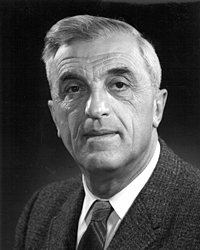
Back فليكس بلوخ Arabic فليكس بلوخ ARZ Feliks Blox Azerbaijani فلیکس بلوخ AZB Фелікс Блох Byelorussian Феликс Блох Bulgarian ফেলিক্স ব্লখ Bengali/Bangla Felix Bloch BS Felix Bloch Catalan فلیکس بلۆخ CKB
Felix Bloch | |
|---|---|
 Bloch in 1961 | |
| Born | 23 October 1905 Zurich, Switzerland |
| Died | 10 September 1983 (aged 77) Zurich, Switzerland |
| Citizenship |
|
| Alma mater | |
| Known for | Bloch equations (1946) |
| Spouse |
Lore Clara Misch (m. 1940) |
| Children | 4 |
| Awards | Nobel Prize in Physics (1952) |
| Scientific career | |
| Fields | Physics |
| Institutions |
|
| Thesis | Über die Quantenmechanik der Elektronen in Kristallgittern (On the quantum mechanics of electrons in crystal lattices) (1929) |
| Doctoral advisor | Werner Heisenberg |
| Other academic advisors | Peter Debye |
| Doctoral students |
|
| 1st Director-General of CERN | |
| In office 1954–1955 | |
| Preceded by | Edoardo Amaldi (as Secretary-General) |
| Succeeded by | Cornelis Bakker |
Felix Bloch (/blɒk/;[2] German: [blɔx] ⓘ; 23 October 1905 – 10 September 1983) was a Swiss-American physicist[3] who shared the 1952 Nobel Prize in Physics with Edward Mills Purcell "for their development of new methods for nuclear magnetic precision measurements and discoveries in connection therewith".[4] Bloch made fundamental theoretical contributions to the understanding of ferromagnetism and electron behavior in crystal lattices. He is also considered one of the developers of nuclear magnetic resonance.
- ^ a b "Felix Bloch". Mathematics Genealogy Project.
- ^ "BLOCH Definition & Meaning". Dictionary.com.
- ^ Hofstadter, Robert (March 1984). "Obituary: Felix Bloch". Physics Today. 37 (3): 115–116. Bibcode:1984PhT....37c.115H. doi:10.1063/1.2916128. Archived from the original on 30 September 2013.
- ^ Sohlman, M (Ed.) Nobel Foundation directory 2003. Vastervik, Sweden: AB CO Ekblad; 2003.
© MMXXIII Rich X Search. We shall prevail. All rights reserved. Rich X Search